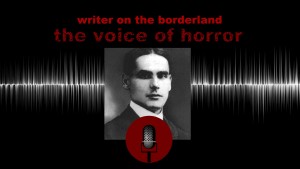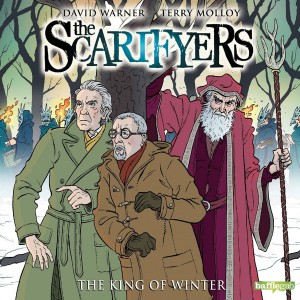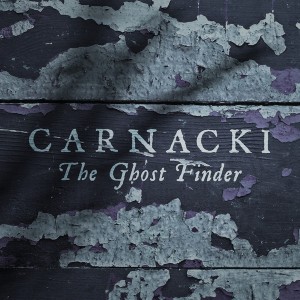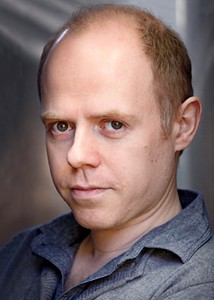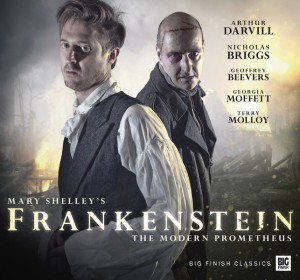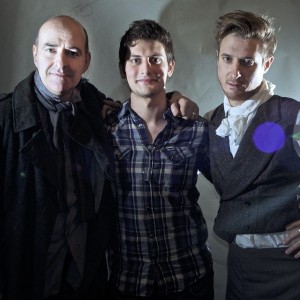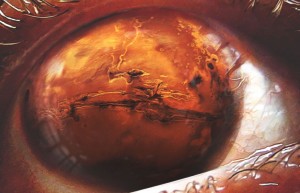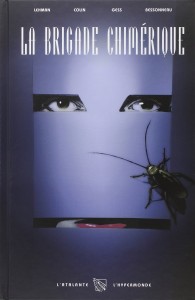The man who is Carnacki, inside the recording studio, being Dr Who’s Strax, weird fiction and more. Today we’re delighted to be joined by actor and great guy Dan Starkey in another exclusive greydogtales interview. Are we cool, or what? (Please DO NOT answer that question.)
Dan stands out for us, and for many of our listeners, because of his recent, superb audio performance as William Hope Hodgson’s Carnacki the Ghost Finder. His is really the first proper rendition of the role as it was written, and we are not the only ones who have called his performance definitive.
He is, however, a man of many parts (some of them hidden under mounds of prosthetics) and we shall try to do justice to his range by probing away…
greydog: Dan, welcome to greydogtales. Given that you have a background in Anglo-Saxon, Norse and Celtic studies, a constant source of interest with us for mythic inspiration, we have to start with one crucial question. Why acting?
dan: Thank you for having me! Yes I did my undergraduate degree and MPhil in Anglo-Saxon, Norse and Celtic initially on a whim. I was going to do English Literature at university, but then I saw the subject in the Cambridge prospectus and it captured my attention, as it combined a lot of my other interests apart from “pure” literature, such as aspects of linguistics, history and archaeology.
In the end I realised that my interests ultimately lay more on the literary side of things, but I was very glad to have taken a more round about route in that realisation, acquiring a reading knowledge of four mediaeval languages in the process. I think I probably had at the back of my mind a self-image of some M R James type antiquarian, or slightly less energetic Indiana Jones substitute, but that’s only with the benefit of hindsight.

Certainly when I finished my degrees and returned to reading literature in my own language I was extraordinarily grateful at how relatively straightforward it was to appreciate! Old Irish, for example, is immeasurably more distant, aesthetically as well as linguistically. Acting was always something I did at school, and is the flipside to these rather monkish, hermetic parts of my character. I have had times – especially when I was contemplating becoming an academic which was an obvious career path having studied such an esoteric subject – when I’ve tried to ignore the “actor” side of my nature, but it honestly drives me nuts. I’ve learned to embrace my inner show-off, and thankfully it’s enabled me to pay my rent for most of the last ten years, so I’m doing something right…
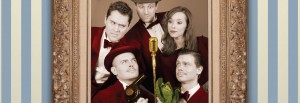
greydog: We think you must be. We’ve been digging. You were nominated as Best Male Performance at the Off West End Theatre Awards (Offies) in 2012. You’ve been involved in the Fitzrovia Radio Hour, classic radio plays of the 40’s and 50’s performed in front of a studio audience, and much other audio work. And of course, you had numerous appearances on Dr Who and Wizards Vs Aliens. Which do you prefer? Treading the boards, TV or audio?
dan: It’s great to have a mixture of things to do, though it seems inevitable that the grass on the other side is always greener: I’ll be doing a play, and I’ll think, wouldn’t it be nice to do some TV, or I’m doing a talking book and I feel the urge to get on stage and experience the crackle of live performance. As I’ve mentioned above, I think different media allow you to satiate different impulses you have as a performer, whether it’s the intimacy of an audio performance when it’s just you and the microphone, or the adrenaline rush of doing live theatre on stage in a thousand-seater auditorium.
On a purely mercenary level, it’s worth noting that the most fulfilling jobs aesthetically are not necessarily the best paid, whereas saying three words in a voice-over for a Skoda commercial – to pluck an example out of the air – could pay your rent for a few months, so being a bit “pick and mix” is a necessity!
greydog: We want to hear more about you, Carnacki and Hope Hodgson, but we feel we should address the Sontaran in the room. When we announced you were joining us, rather a lot of listeners went “Oooh, Strax. We love him!”. The character is enormously popular. Was your transition from multiple Sontarans to Strax himself by accident, or something you actively went for?
dan: I had no idea prior to getting the script for “A Good Man Goes to War”, the story in which Strax makes his debut, that I was going to have more than a token couple of lines in the background as another Sontaran, and in that story Strax did appear to die. He was a character who leapt off the page, as did Vastra and Jenny, and clearly they struck a chord with both the production team and the viewers. When you get given the opportunity to play such a fun character that people love, you’ve got to go with it!
greydog: We know that there are a lot of folk out there who are glad you did. We write weird fiction, but sadly, we’ve never come up with a female Silurian detective, married to a young Victorian woman, who is supported by a literal-minded alien warrior with nursing credentials. Is it fun to perform your role in the Paternoster gang, or just work?
dan: It’s both! I remember the first time I played a Sontaran, Commander Skorr, back in 2007. It was my first television part anyway, but after getting used to the surreality of wearing a rubber suit for the best part of fifteen hours a day, and having my head poked in fascination by David Tennant, I remember spending the best part of an entire day running around a warehouse, shooting soldiers with a zap gun and laughing insanely. At various points it did occur to me that I was actually getting paid to do it as well, and reeling in incredulity, although that might have been due to overheating in my foam latex mask. With Strax, I’m always very well served by the writing, and even if I’ve only one line in a scene, I know it’s likely to be a memorable one.

greydog: Let’s shift through time and space, avoiding the comment that Madam Vastra isn’t far from being an occult detective herself. Carnacki. Producer Scott Handcock spoke to us about the background to the audiobook a few weeks ago (see carnacki lives!). He said that you were immediately interested when you heard about the plan for Hope Hodgson’s tales. So you were already quite a fan?
dan: I had read a couple of the Carnacki stories, having been introduced to the character by his appearance among the 1910 grouping of Alan Moore’s League of Extraordinary Gentlemen, the various iterations of which are a marvellous primer for different types of weird and pulp fiction over the last century or so! I believe that the former Doctor Who script editor Andrew Cartmel had referenced Carnacki in some of the Doctor Who spin-off literature of the 90s, so I had been aware of him for a while.
Reading the stories a bit closer, in preparation for performing them, gave me a deeper appreciation for the character and he’s quite fun in that he’s a balance of the bluff and vulnerable. He affects his listeners in that he lets them into his thought processes, the shame and terror, as well as his rational, methodical attitude to the supernatural – or ab-natural as he dubs it. I love all the references to stories we haven’t seen as well. I’m always a sucker for a bit of world-building…
greydog: As editor/publisher and media enthusiast James Bojiacuk recently said, “(Starkey) is able to take Hodgson’s thin characterization and – with nothing more than acting and emphasis – make Carnacki a compelling, full character. It’s exceptional.” How did you manage to bring such life to the role?
dan: I’m delighted with how well it’s all gone down. I hope it doesn’t sound glib, but I used the techniques I always utilise in these occasions: I read the text closely and use my imagination! I think the feeling of the period is evoked very clearly in the writing, and that is very helpful in locating the voices for me. Carnacki’s obviously an Edwardian gent judging by his diction, and I think that rather being an impediment, the rather florid language in some passages gives you more to chew on and play with, than a bit of bland neutral prose would. The supporting characters are also quite boldly drawn, especially in the case of the Irish characters in The House in the Laurels, being written in an almost phonetic Edwardian stage Irish, so that really necessitates you go for it in terms of characterisation, as something half-hearted just wouldn’t make sense of the text at all!
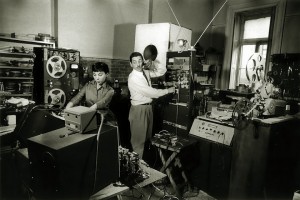
greydog: For the uninformed, like ourselves, what’s it like when you get into the recording studio? Serene and solitary, or surrounded by tutting sound engineers and producers looking at their watches? Hard chair and a gun to your head, or a comfy sofa and a pot of tea?
dan: It depends on the nature of the recording. For Carnacki, as it’s a solo read for the most part, it was just me in the booth with Scott outside giving notes over a microphone and Neil Gardner – who runs the studio – at his sound-desk, making sure all the technical details are ok. I’ve done audiobooks with just Neil though, so it can be an oddly intimate business, talking to yourself for eight hours or so on the trot. It’s also quite a darkened little room and especially after lunch, I sometimes take a power-nap in between chapters to keep myself fresh. I’m very good at napping, which I learnt how to do on touring theatre. With a full cast audio drama, of the type I’ve done for BBC Radio and Big Finish Productions, it’s much more convivial, with a green room and studio full of other actors to interact with.

On that note it was lovely to see Joe Kloska again – who plays Dodgson – who I first met and worked with many moons ago when we were both recent drama school graduates. I’ve met very few actors who don’t enjoy doing radio. It’s quick and fun, and whilst you’ve got to be on your toes, it does allow you to play a wider range of parts than you might do on screen or stage, as the main criterion is how you sound as opposed to what you look like. I always find it hilarious when I’m playing some 6’10” heavy on the radio, as in reality I’m only 6’7”…
greydog: And outside of Hope Hodgson, are you an enthusiast of other period authors and classic supernatural or strange tales?
dan: I try to read widely, and I’ve certainly got a taste for the weird amongst other literary flavours. Lovecraft scared the hell out of me when I was about fourteen and I’ve returned to him many times since, as I did to M R James, who I also love. I’ve dabbled in Poe and recently enjoyed The King in Yellow by Robert W Chambers. There are a lot of modern writers who are riffing off the “weird” tradition I enjoy, like China Mieville, or Ian (M) Banks, and there are a lot of intrusions of weird subject matter into “literary” fiction, such as Thomas Pynchon, or Will Self.
I recently finished a Hilary Mantel novel from 2005 – before she had such massive success in historical fiction with Wolf Hall and its successors – called Beyond Black, which is a semi-satirical novel about mediumship. It provides an interesting perspective on similar subject matter that Carnacki deals with, transposed into an acutely contemporary setting; it was a nicely mundane and down-at-heel counterpoint to Hodgson’s somewhat more gentlemanly Edwardian vision of the spirit-world.
greydog: Yet another book for our ‘to read’ list. With six Carnacki tales under your belt, what would be your next choice audio role? Are there any other notable characters who you would really like to play?
dan: I’d definitely like to do the remaining Carnacki tales. The Hog in particular is fantastic. Outside that, I’d love to do some of the writers I’ve mentioned above, although I imagine that Lovecraft’s prose would provide even more tongue-twisters than Hope Hodgson’s…
greydog: We may nag Scott Handcock and Big Finish about The Hog at some point, in case they forget. Finally, any acting plans or news for 2016 that you can share with us?
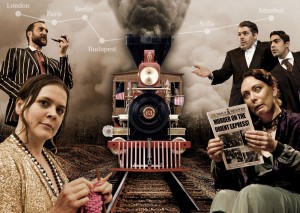
dan: I should be taking part in the 50-Hour London Improvathon at the end of April, which this year is set on the Orient Express (details at: http://www.improvathon.co.uk) There’ll also be the second series of a Children’s BBC comedy programme I was involved in last year, called Class Dismissed which will film in the summer. Apart from those there’s nothing too definite in the diary. In my job I expect the unexpected, like Carnacki!
greydog: Thanks very much for taking the time out to contribute to greydogtales, Dan, and we wish you every success in the future.
####
Don’t forget that you can hear Dan as Carnacki by picking up the new audio collection from Big Finish. Click the image at the top of the right-hand sidebar for more details. Five hours of occult detective goodness!
If you’re feeling Dr Who-ish, you can see Dan being made up as Strax here:
And you can get even another Dan Starkey audio fix by having a listen to Jago, Litefoot and Strax:
“The worlds of classic and new Doctor Who combine, as one of the favourite associates of the Eleventh and Twelfth Doctors – the Sontaran Strax – encounters Jago & Litefoot – the Victorian friends of the Fourth Doctor.”
 jago, litefoot and strax – amazon
jago, litefoot and strax – amazon
Next time on greydogtales: Weather anomalies in Namibia. Or the knitting pattern for a life-size model of David Tennant. A lurcher in a space helmet. We really don’t know. But we will try to keep it weird…
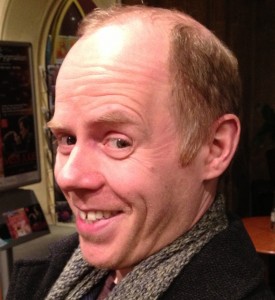
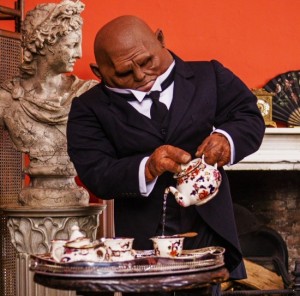
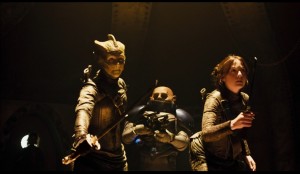
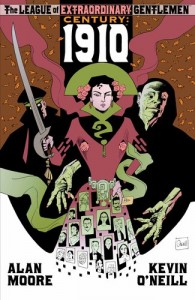
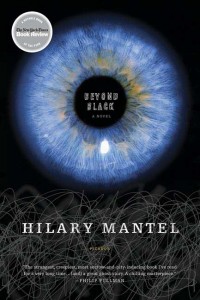
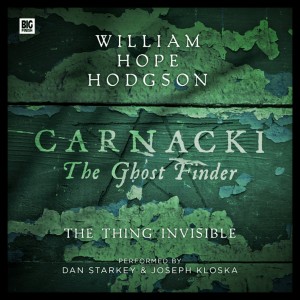



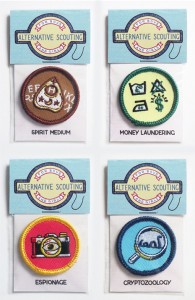 luke drozd
luke drozd
